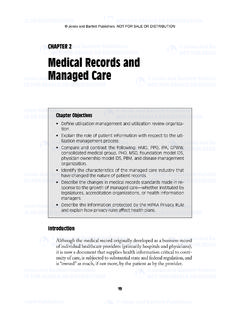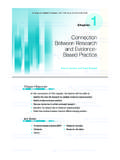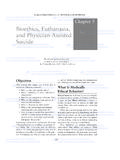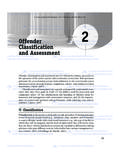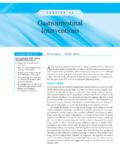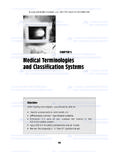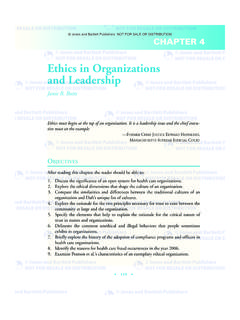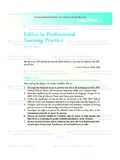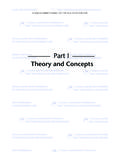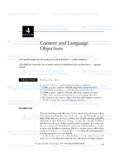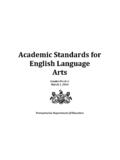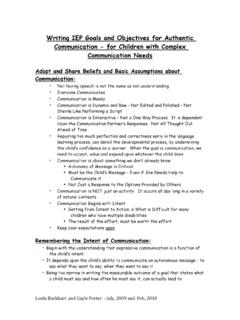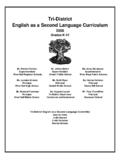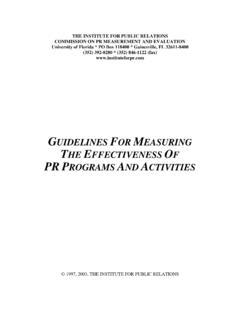Transcription of Developing Instructional Objectives
1 DevelopingInstructional Objectives You tell me, and I forget. You teach me, and I remember. You involve me, and Ilearn. BENJAMINFRANKLINA systematic approach for Developing an assessment plan ensures that the plan is comprehen-sive. Numerous educational experts (Airasian, 2001; Ebel & Frisbie, 1991; Gronlund, 2004;Huba & Freed, 2000; Mager, 1997; Mehrens & Lehmann, 1991; Nitko, 2004; Trice, 2000;Weimer, 1996) identify Objectives as the logical foundation of the teaching learning assess-ment process and agree that the first step of an Instructional plan is to identify the course objec-tives. Objectives set the stage for effective planning, teaching, and assessment by specifying whata student should know and be able to do at the end of an Instructional course (Weimer, 1996).Educators frequently concentrate on what material to include in a course before iden-tifying what knowledge and skills they want students to develop.
2 This approach tends toemphasize the recall of factual information instead of focusing the students on developinghigher-level learning abilities. Identifying the Objectives as the initial step in planningguides the Instructional and assessment processes for a course and also provides the frame-work for Developing measurement instruments that provide valid and reliable informationabout student Gronlund proposed a plan for preparing clearly defined Instructional objec-tives in 1970. The most recent edition of his book (Gronlund, 2004) continues to refine thatplan, but the basic principle remains the same: State the Objectives in general terms andidentify specific learning outcomes to define the Objectives in terms of the behavior that stu-dents are expected to demonstrate at the conclusion of the instruction.
3 With this 2/10/07 2:57 AM Page 27 Jones and Bartlett Publishers. NOT FOR SALE OR DISTRIBUTIONthe Objectives guide the Instructional destination of an educational experience for both theteacher and the students, while the outcomes define the Objectives by specifying the behaviorsthat represent the achievement of the Objectives and outcomes during the initial phase of course preparation com-pels you to identify your learning expectations in a language that explicitly communicatesyour intent to students. Students are much more likely to succeed if they understand what isexpected of them from the outset of an educational experience and if they perceive the expec-tations to be realistic. Effective Objectives come from the real world (Mager, 1997). Whenstudents recognize that the purpose of the instruction is relevant and useful for their educa-tional goals, they are more likely to assume ownership of their own defined Instructional Objectives steer efficient course planning.
4 In addition, theyguide the selection of teaching and learning activities, direct the development of measure-ment instruments, and empower students to take charge of their own learning to meet yourexpectations, thereby increasing the validity of your assessment of ObjectivesObjectives guide the Instructional process by synchronizing the planning and imple-mentation of teaching, learning, and assessment activities, thereby focusing on the out-comes teachers want students to achieve. Unfortunately, course preparation ofteninvolves planning for the content and teaching activities without first establishing a cleardefinition of what student outcomes are desired. This approach can lead to instructionalmethods and assessments that focus on knowledge acquisition rather than on higher-level learning outcomes.
5 If students are expected to achieve the Objectives of a course, they must be providedwith appropriate opportunities to learn what they need to learn (Huba & Freed, 2000). Instructional Objectives require teachers to provide students with the kinds of experi-ences that facilitate the attainment of the Objectives . When Objectives are determined atthe beginning of a course, they provide direction to the teacher for selecting the instruc-tional activities that promote achievement of the desired behaviors (Gronlund, 2004).For example, a course objective that requires a student to demonstrate critical thinkingskills necessitates that the teacher select learning experiences and assessment activitiesthat require the ability to think critically. Refer to Chapter 14, Laboratory and ClinicalEvaluation, for a discussion related to designing clinical and laboratory experiences andassessment tools that address the course today s rapidly advancing computer technology, the need to develop innova-tive approaches to facilitate learning is paramount.
6 The pervasive nature of the Internetand the rapid progression of distance learning mandate that teachers develop creativeteaching modalities and learning opportunities to meet learner preferences. In this atmo-sphere of self-directed learning, Instructional Objectives are assuming an ever-increasingrole as the basis for meeting the diverse needs of learners. Students who have the oppor-tunity to select from various learning strategies to meet the intended Objectives becomeactive participants in the learning students are aware of what is required of them from the beginning of acourse, they are given responsibility for their own learning and the opportunity todirect their activities toward achieving the required outcomes (Reilly & Oermann,1990). Self-direction is facilitated when an individual learner has the ability to decide28 Chapter 3 Developing Instructional 2/10/07 2:57 AM Page 28 Jones and Bartlett Publishers.
7 NOT FOR SALE OR DISTRIBUTIONhow to meet a course s Objectives by selecting from a variety of teaching/learningstrategies designed to accommodate diverse individual learning styles. Instructional Objectives and learning outcomes also play a crucial role as the basis forvalid measurement instruments by providing the framework on which a test blueprint isbased. As Chapter 5, Implementing Systematic Test Development, describes in detail,the blueprint directs the content of the test. In addition to shaping the blueprint, theobjectives guide the development of the test items. Chapters 6, Selected-ResponseFormat: Developing Multiple-Choice Items, 7, Writing Critical Thinking Multiple-Choice Items, and 8, Selected-Response Format: Developing True-False andMatching Items illustrate how selected-response items evolve from the course objec-tives.
8 While Chapter 9, Constructed-Response Format: Developing Short-Answer andEssay Items, explains how the course Objectives guide the development of constructed-response items. The most important role of the Instructional Objectives is to increase thevalidity of the results of assessments. When student achievement is measured with instru-ments that are developed from Instructional Objectives , fairness is of Instructional ObjectivesWhat is the most effective way to state an Instructional objective? Figure presentstwo different approaches for defining one objective for a hypothetical course in the foun-dations of nursing an objective is teacher focused, the attention is centered on the teachingactivity. Teaching is an end in itself; learning is not a criterion. The objective, in effect,is met once the teaching takes place, regardless of whether the teaching is effective.
9 Inthe traditional lecture format the learning is teacher focused; the teacher has control ofthe learning. This approach focuses on transmitting information and explains the all-too-common teacher lament, I don t understand why the students do not know that mate-rial. I covered it in class. A learner-focused objective focuses on the learning that occurs in relation to theteaching that is taking place. Stating Instructional Objectives in terms of the required stu-dent achievement shifts the focus of the educational experience from transmitting vol-umes of information to providing learning experiences that foster attainment of theobjectives. The focus changes to facilitating learner achievement. Teaching is a means toan outcome rather than an end in Objectives require teachers to examine their teaching strategies andto develop creative methods to facilitate student learning.
10 Because students have dif-ferent learning styles, a variety of approaches must be integrated into a course to pro-vide opportunities for the students to attain the Objectives . With this approach, ifstudents do not achieve the desired outcomes, the first question that a teacher must askis, Were the Instructional experiences appropriate? Focus of Instructional Objectives29 Teacher-focused:Demonstrate to students how to safely perform basic nursing : The student will demonstrate safe performance of basic nursing Teacher-focused versus learner-focused Instructional 2/10/07 2:57 AM Page 29 Jones and Bartlett Publishers. NOT FOR SALE OR DISTRIBUTIONIt is important to recognize that teachers who do not consciously identify instruc-tional Objectives are most likely operating on teacher-focused goals.
